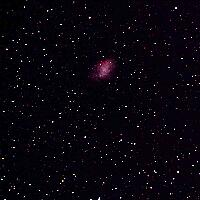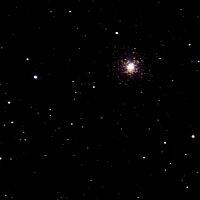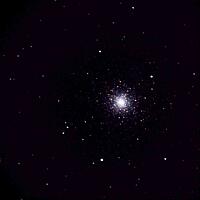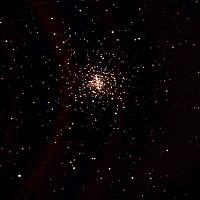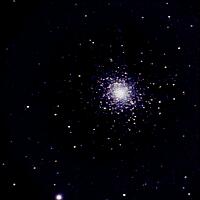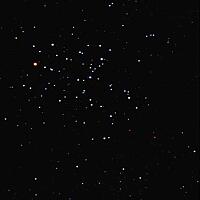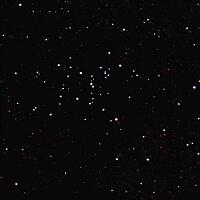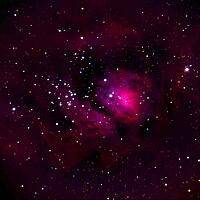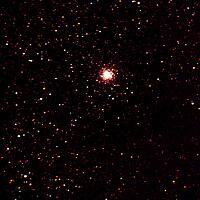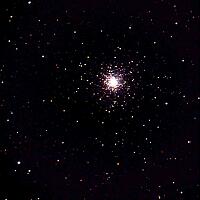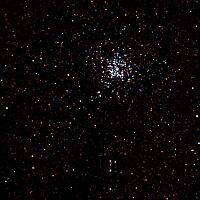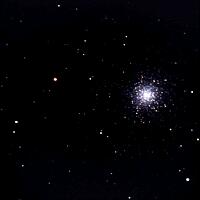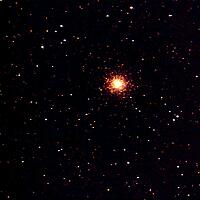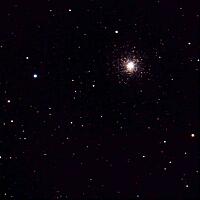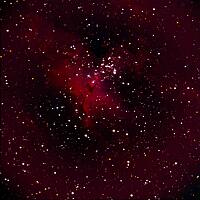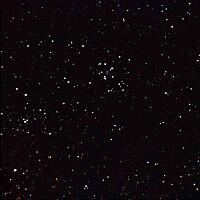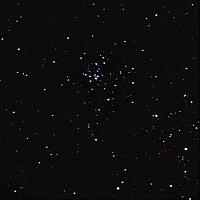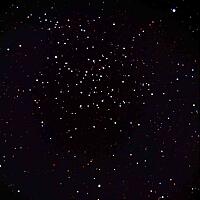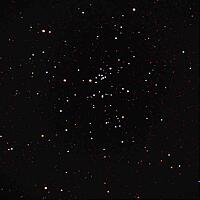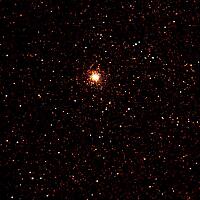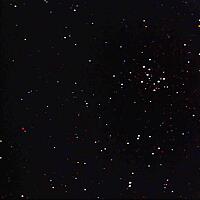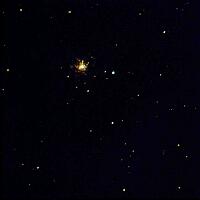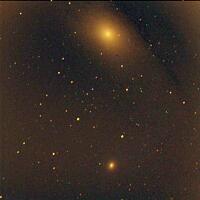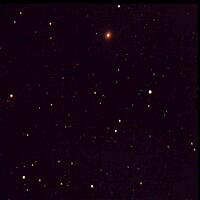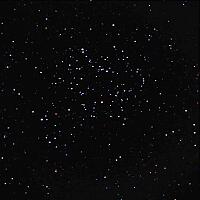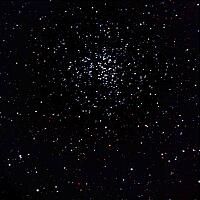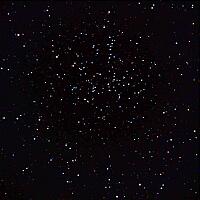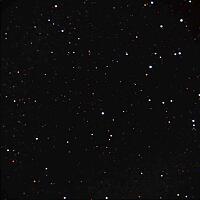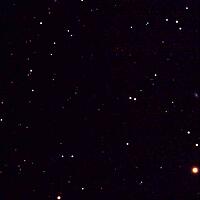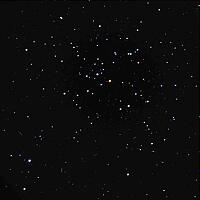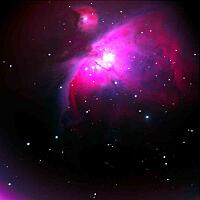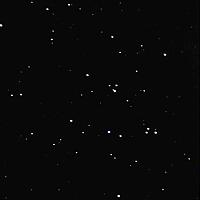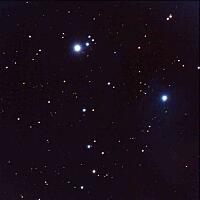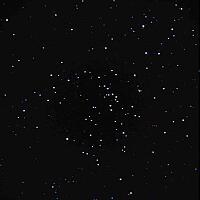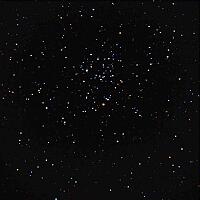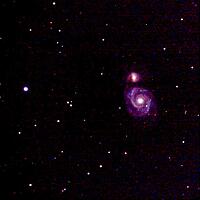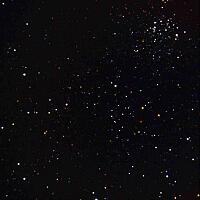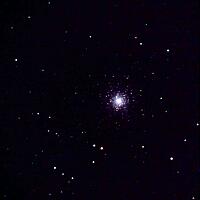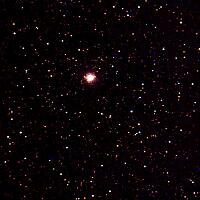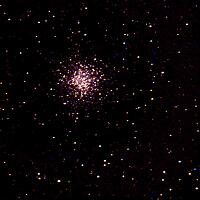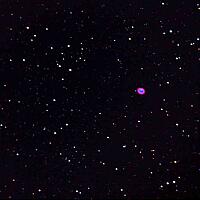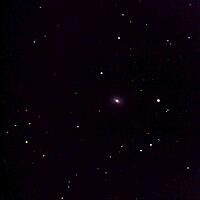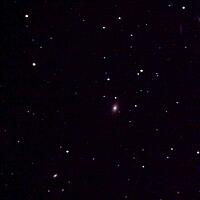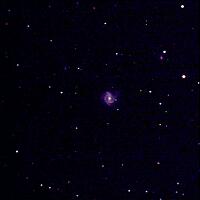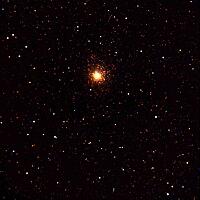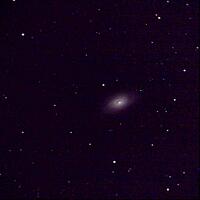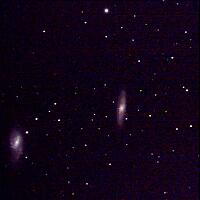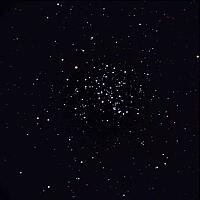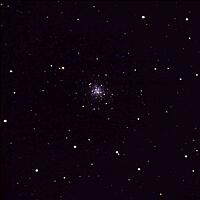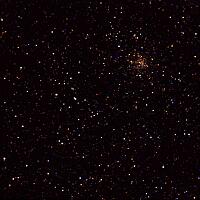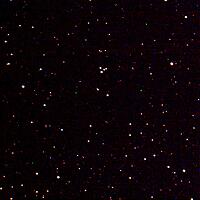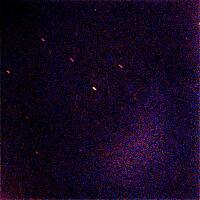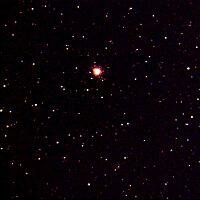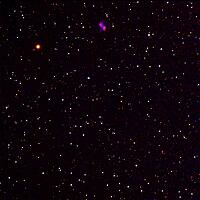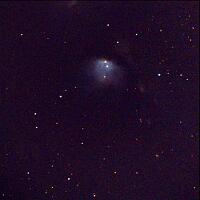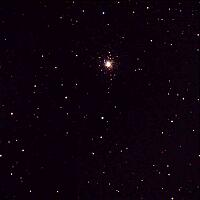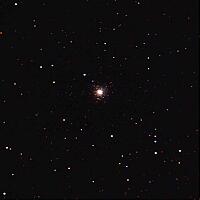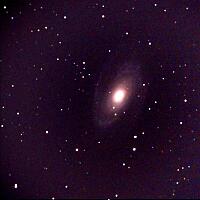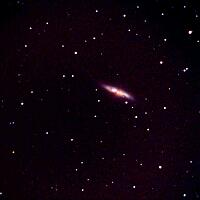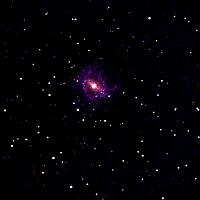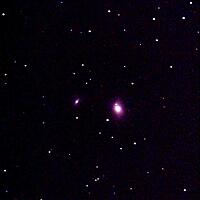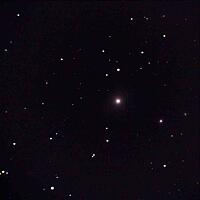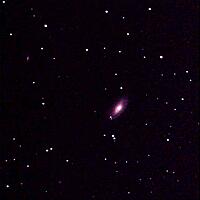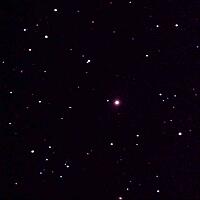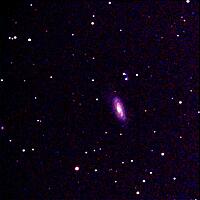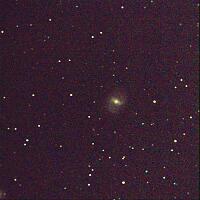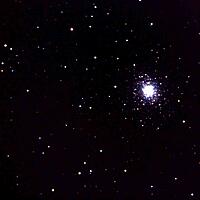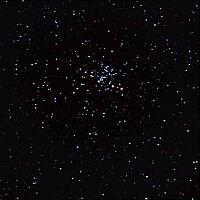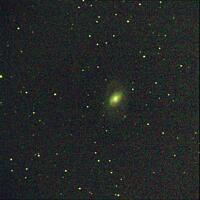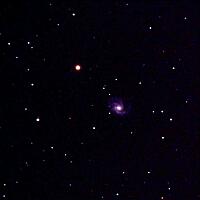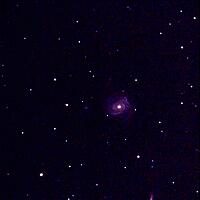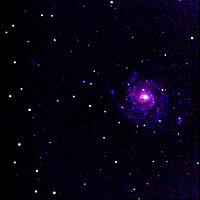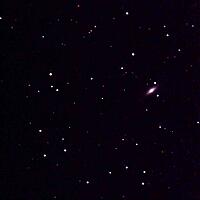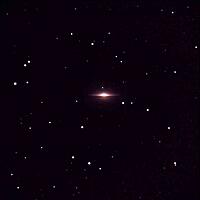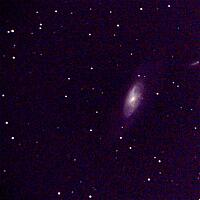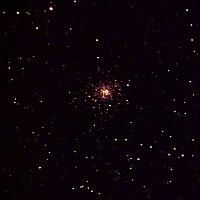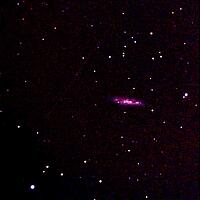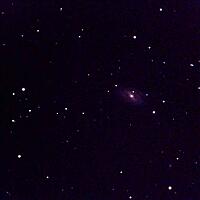Messier Marathon Images taken on 1
April 2011
Charles Messier was an 18th century French astronomer who was looking
for comets. He made a list of objects in the sky that were NOT
comets so as to avoid them. They are some of the brightest and
most interesting objects in the night sky. His 4-inch telescope
did not reveal the details of these objects so he just saw them as
fuzzy things that looked similar to comets...There is one time of the year that from dusk to dawn, it is possible to see all 110 Messier objects by staying up all night. That time coincides with the new moon (so it doesn't wash out the sky) and late March or early April depending on the day of the new moon.
This year, a challenge was issued by the Saguaro Astronomy Club and communicated to the East Valley Astronomy Club to attempt to photograph all 110 objects in one night. I spent about three weeks making modifications to HandyAvi to automate the process. On 1 April, 2011, I achieved the results shown below. All objects were imaged except M74 which was on the edge of my frame due to atmospheric refraction which I had not accounted for and M27 due to an unfortunate right-ascension type-o in my script. More technical details are given down below the thumbnail images shown here.
Click any thumbnail image below to see a larger image.
Additional information:
The "official" Messier Marathon this year was the night of 2/3 April. It was very cloudy unlike the night before when I obtained the above images. On 2 April I did correct for refraction for M74 and attempted shots but the clouds prevented obtaining images. The problem with M74 this year was that it was very low in the sky at dusk. The question is whether the camera could have teased the image of the M74 galaxy out of the twilight region near where the sun had set. I think it could since the central point of light of the galaxy is about the same magnitude as the stars that I did manage to image in that region. It would not have been a great image but I think it might have just barely shown the core of the galaxy.I have shot M27 many times. I did not realize there was a type-o in my data until I started putting this web page together. RA should have been 19:59:36. My table had 18:39:36. A one hour error! I will correct that for next year's attempt...
The other thing that caught me by surprise was the effect of atmospheric refraction on objects near the horizon that are rising or setting. I was taking 70 second unguided exposures with a VERY well-aligned telescope. During that time, the change in refraction as an object near the horizon moves toward or away from the horizon is enough to create star trails! I don't really want to shoot shorter exposures because the image download time to the computer is 13.6 seconds! A 70 second exposure actually takes 83.6 seconds and a 10 second exposure would take 23.6 seconds. Not really a good trade-off but I might have to make an adjustment next year to compensate for this effect... Back yard testing did not reveal this because I cannot see anything near either horizon due to trees, buildings, etc.
I was of course aware of the refraction but just didn't think it would be a factor in this project.
The above images are each comprised of three 70 second unguided images stacked and processed using Maxim DL. I used Maxim DL Visual Basic Scripting to write a script to automate the image processing work! Saved MANY hours of work... Didn't know I could do that until this project! Here is what that looks like:
Path = "C:\AAnew\ASTRONOMYSOFTWARE\_MessierMarathon\01Apr2011\"
for i = 1 To 110
Set doc2= CreateObject("MaxIm.Document")
Set doc3= CreateObject("MaxIm.Document")
doc1.OpenFile path + "M" + CStr(i) + "-70s-0001.fit"
doc1.Calibrate
doc1.ConvertColor 0, 100, 81, 100, 0, 1
doc1.FlattenBackground
doc1.SaveFile path + "b1.fit", 3, 0, 1
doc2.OpenFile path + "M" + CStr(i) + "-70s-0002.fit"
doc2.Calibrate
doc2.ConvertColor 0, 100, 81, 100, 0, 1
doc2.FlattenBackground
doc2.SaveFile path + "b2.fit", 3, 0, 1
doc3.OpenFile path + "M" + CStr(i) + "-70s-0003.fit"
doc3.Calibrate
doc3.ConvertColor 0, 100, 81, 100, 0, 1
doc3.FlattenBackground
doc3.SaveFile path + "b3.fit", 3, 0, 1
doc3.CombineImages 1, 0, 1, 0
doc3.AdjustSaturation 200
doc3.KernelFilter 6, 7
doc3.FlattenBackground
doc3.SaveFile path + "M" + CStr(i) + ".fit", 3, 0, 1
doc1.Close
doc2.Close
doc3.Close
HandyAvi Modifications
Last year I did the Messier Marathon visually and had already decided to try to do it photographically this year when A. J. Crayon of the Saguaro Astronomy Club gave a short presentation at an East Valley Astronomy Club meeting and suggested that some of us try doing it photographically.I did some simple calculations that showed that one would have only 4 minutes and 37 seconds per object from start of Astronomical Twilight to end of Astronomical Twilight on 2 April 2011. Usually takes me half an hour to set up a shot! So I realized that if I were going to have any chance of pulling this off, it would require that the process be fully automated. Fortunately, I am the author of HandyAvi so I can modify the source code to support such projects.
I already had software in place to fully control the telescope. I had to figure out how to make the camera take images. Discovered that Maxim DL has a pretty complete set of routines that can be operated via Visual Basic scripts. So I wrote code to have HandyAvi create Visual Basic script files on-the-fly, execute them and wait for their completion.
In order to get the objects centered in my camera's field, I found I had to implement precession calculations to bring the J-2000 Epoch data of the objects up to "J-Now", i.e., create new coordinates for each object taking the Earth's precession into consideration for the current date. This is again done on-the-fly so that the file I use to control the process contains J-2000 coordinates for each Messier object. I had not thought that refraction effects of the Earth's atmosphere would be significant but I see I now have to add a correction for that. I created a HandyAvi Script that gave each object, its coordinates, the time at which to begin moving the telescope to the next object, the number of shots and the duration of the shots. HandyAvi uses the script to supervise the entire operation. The script is checked to make sure the times specified allow completion of the scheduled events, i.e., the distance in degrees from the previous object to the next object is calculated so that the time required to move the telescope can be calculated. The telescope move time, the exposure times, and the image download times are calculated and checked to see that they do not run into the start time of the next object. I also calculated the altitude of each object at the given time and re-ordered the list in a couple of places to allow objects to be shot at the highest altitude possible within the time constraints of shooting ALL of the objects.
When executing the "go to list", HandyAvi displays a count-down time to the next object and provides status when the telescope is slewing or an image is being captured.
Equipment
Meade LX-200 Classic f/6.3 scope. TCF-S temperature compensated focuser. f/6.3 focal reducer. 12 mm spacer. SBIG ST-4000XCM single-shot color camera. Scope operates at f/5.6 in that configuration as determined by "Pinpoint Astrometry" plate-solve in Maxim DL.Trials and tribulations
Lots and lots of back-yard testing of the process and lots of revisions
and improvements.
Then on 31 March, drove out to the Hovatter site, set everything up and
began testing.
Encountered 19 Blue-Screen-Of-Death events that night! Finally
isolated it to something funny about the TCF-S focuser driver.
Could not operate with the focuser being actively controlled!
Realized that the little control box could handle the temperature
compensation without software being invoked on the PC. That is
what I used then on 1 April when I got the above images. I did
not encounter this problem at ANY time when using the desk-top machine
at home for testing. Only when I got out to the desert using the
laptop... Will be debugging that over the next couple of
days. I have 19 "mini-dumps" to analyze after I collect
everything needed to analyze mini-dumps, i.e., 200 Megabytes of Symbol
Tables for example... (I later determined that the errors were apparently disk-drive errors. I replaced the disk drive and have had no further problems...)
So, always test with the ACTUAL equipment you are going to use out in
the field! Even if it looks like the machines should be exactly
equivalent... 45 years continuous experience writing scientific
software and I still didn't expect something like this... Was a
very good thing to go out early and test things...
So, looking forward to next year already to try this again.... :-)
2012 Attempted Repeat. I failed. Scope was not properly PEC trained and I was unable to determine what the problem was under the pressure of trying to get everything working for an automated try. Stars were badly trailed in RA due to this problem. I have since done PEC training under excellent seeing conditions so that problem is now resolved...
I will try again in 2013. I am trying to make the modifications I made to HandyAvi available as part of the software system so that others might try shooting all Messier objects in one night.
